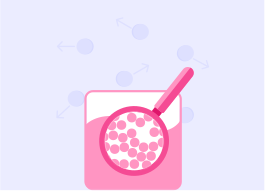YOU ARE LEARNING:
Particle Model

Particle Model
Matter can either be solid, liquid or gas. The state of a substance dictates the degree of freedom of motion of the particles that make it up.
Which of the 3 states of matter has strong bonds holding the particles in a rigid pattern?

What does this best describe the particle structure of? A disorganised pattern with weak bonds between the touching particles, allowing the particles to move.

Which of the 3 states of matter have no noticeable bonds between the particles allowing the particles to move freely?

There are strong bonds between the particles in a solid, weak bonds between the particles in a liquid and practically no bonds between the particles in a gas.
How do you think particles in a solid move?

How do you think particles in a liquid move?

Which of the following best describes the movement of the particles in a gas?

Particles in a solid move around a fixed point (vibrate). Particles in a liquid are able to move (slide) over each other. Particles in a gas move freely.
This image shows the particle structure in the 3 states of matter.
See above image.

When you pour water into a kettle it is initially liquid. When the water starts to boil, some of it comes out of the kettle as steam, which is a gas.
True or false? The particles in the steam move quicker than in water.

Particles in a solid have strong bonds and therefore they can only vibrate around a fixed point. Particles in a liquid have weak bonds which means they can slide past each other. Particles in a gas have negligible bonds, so they can move freely.
